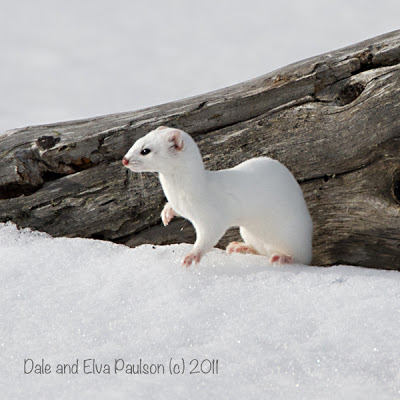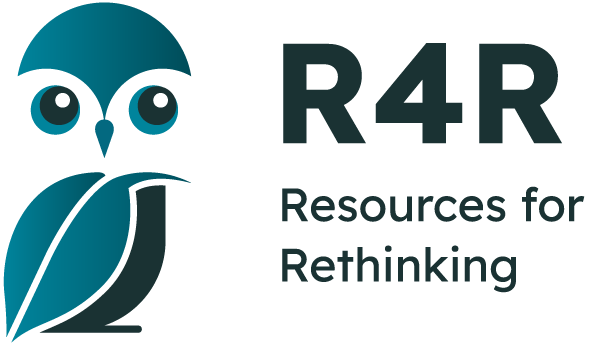- Home
- Tutorial
- Resource Guides
- Focus Areas
- LSF Programs
-
Professional
Development - Review Process
-
A project of LSF

Search for Resources
Snow - The Action Down Under
Late January 2025Top R4R Picks
Resources for extending the learning
-
Evergreens in WinterElementary
-
Provide a Backyard Feeding Station for BirdsMiddle, Secondary
-
Snow CharacteristicsMiddle, Secondary
-
The Great Monarch MigrationElementary, Middle
-
Winter StormsElementary, Middle, Secondary
-
-
Inuit Knowledge and Climate ChangeSecondary
-
-
National Parks Can Help Birds Adapt to Climate ChangeElementary, Middle, Secondary
-
The Future of Birds in a Changing ClimateMiddle, Secondary
-
Can Wildlife Adapt to Climate Change?Middle, Secondary
-
Journey to the Subnivean ZoneElementary, Middle
Featured Process: The World Under the Snow
The recent cold affecting much of the country puts limits on outside activities for lots of people, but there are a lot of active creatures out there who don't mind, as long as the snow is deep enough. They are the denizens of the subnivean, which is not the layer in the drawer below the hand cream, but rather the active world beneath the snow. Subnivean happenings unfold in the space between the ground and the snow that is created as snow gets draped over plants, trees, bushes and other things.![]() We discussed the molecular magic of ice and snow in early December – not only does snow’s molecular structure make it less dense than water, but it also makes snow a great insulator, particularly light, fluffy snow. Just 25 cm of snow can result in constant temperatures a bit above or below 0oC at ground level when surface temperatures plunge to -20-40oC. But don’t trust me. Find your own snow bank, dig a pit, and record the results (click here for lessons). Solidifying warm gelatin in clear canisters might actually be more fun. Keep in mind that snow thrown by plows or shovels will be denser and provide less insulation.
We discussed the molecular magic of ice and snow in early December – not only does snow’s molecular structure make it less dense than water, but it also makes snow a great insulator, particularly light, fluffy snow. Just 25 cm of snow can result in constant temperatures a bit above or below 0oC at ground level when surface temperatures plunge to -20-40oC. But don’t trust me. Find your own snow bank, dig a pit, and record the results (click here for lessons). Solidifying warm gelatin in clear canisters might actually be more fun. Keep in mind that snow thrown by plows or shovels will be denser and provide less insulation. 

With lots of snow, small rodent populations can explode in winter, since snow increases the habitat where they can move around relatively safe from predators. But not entirely – owls, particularly the Great Gray, are adapted to hear and plunge through 30 cm of snow to capture prey, sometimes leaving perfect marks to tell the tale (of course, they aren’t always so elegant about it and may occasionally underestimate snow depth). However, freeze/thaw cycles will result in a hard enough crust that the owls cannot penetrate, jeopardizing their survival. “Chalk one up for the rodents,” you might think, but that crust can also limit gas exchange to the point where all oxygen below the crust is used up and the rodents die. Crusty conditions can put other wildlife at risk, too. Global warming may lead to more of these cycles, in some areas. And what would happen if there was more winter precipitation, but also warmer weather to melt it quicker? Which species would be the winners and losers? We don’t know the answers, or how exactly numerous factors will interplay, but certainly it will lead to cascading impacts and significant ecosystem changes. ![]() Everything is connected.
Everything is connected. ![]()
Towards spring, plants in cavities beneath the snow may have their own greenhouse, getting enough sun and humidity to get a leg up on plants either exposed to the elements or buried under deeper snow, even to the point of blooming. Soil microbes, particularly fungi, may actually reach their peak biomass under the snow.
Here’s more on the ecology of snow, life beneath the snow, and simple activities for producing subnivean dioramas and studying winter temperatures.
|
Where’s My Cache teaches students about how certain animals, like the Gray jay, are adapted to cold Canadian winters with the use of caches. |
Other Happenings:
- How many different kinds of snow can you find? Here are some from the Inuit:
Pukak (poo-cack) the layer of bonded, granular snow that covers the ground. Animals travel through the pukak layer, where the heat from the earth keeps them warm.
Siqoq (see-kok) drifting snow, the kind that makes “snow snakes” drift across the snow or road.
Qali (kal-ee) snow that collects on tree branches and fence posts.
Api (ah-pee) snow on the ground.
Anniu(an-nee-you) falling snow.
- Having trouble getting across metamorphism? Then take your class and go make snowballs! Just as you can compress a loaf of Wonder Bread into a 5 cm cube, you can take those fluffy snowflakes and mash them into a dense ball, using heat and pressure. Just as Superman made diamonds out of lumps of coal (but could he?) in his hand (here’s the original TV scene, together with the more recent movie scene), you are changing, or metamorphosing, the structure of water. Cut the ball open, and dare them to find the snowflakes. Then have fun throwing all those snowballs at….a tree, or a wall, or something else, hopefully inanimate and unbreakable.
Get outside for a Snow Tour! Make a trail and write a nature guide for other students to follow. Choose 10 unique points of interest along your trail and write a short description for each one.
- Usually about now, on the coldest day in the dead of winter, I hear my first male chickadee mating song of the season, reminding me that spring isn’t really that far off. Keep your ears open for that three note, “Hi, Sweetie!” and dream of warmer times. Or listen up for their “chick-a-dee-dee-dee” calls and count the number of “dees,” because dee is for danger! Chickadee communication doesn’t stop there and birds see things in ways we can’t – in ultraviolet. Apparently, male chickadees that shine the brightest are the sexiest!
- Monarch butterflies that migrated south in late August and September are over-wintering in unique habitat on twelve isolated mountaintops in Mexico.
- Unfortunately, Monarch numbers in Mexico reached an all time low during the winter of 9/10. The previous summer’s weather conditions across their U.S. and Canadian breeding and migration grounds is thought to be the main factor behind the low. However, loss of habitat and its food source, milkweed, due to herbicide use had already contributed to declines. The number of Monarchs more than doubled in 10/11, but fell off again by about 28% in 11/12. The 12/13 winter’s population was the smallest ever recorded -- 41% of the previous year and 38% below the previous low. The 13/14 levels were even worse at 55% below the winter before. But finally, there was some good news! The population increased by 68% in 14/15 due to excellent breeding conditions across North America, although still 80% below the long-term average. Based on summer breeding conditions, tagging data and fall migration data, populations were expected to double in 15/16, but they didn't — they increased by 354%, only 30% below the long-term average. Unfortunately, the population in 16/17 fell back to half of that average, and decreased even more in 17/18, although there is anecdotal evidence (scroll down) to counter that. In 18/19, the population more than doubled to over 6 hectares — a sustained population at this level is the target for Monarch recovery. Unfortunately, the area covered for the 19/20 winter dropped to just over 2.8 ha and slipped to 2.1 in 20/21 before rallying to 2.8 in 21/22. Unfortunately, it slipped back down to 2.2 in 22/23 and 0.9 last winter, the second lowest coverage ever recorded (scroll down) Check back in March to see the confirmed population estimate for this winter.
- Eastern Tent Caterpillars spend the winter in the egg stage, which are easily seen, particularly in the branches of Black Cherry trees. These trees also often have black knot, a fungal disease.
- In the water under the ice of many of our lakes, bass are dormant while Brown Bullheads and Common Carp bury themselves in the mud, but Walleye , Yellow Perch , Northern Pike , Lake Whitefish , Round Whitefish, Lake Trout and Rainbow Trout remain active. Generally, they can be found in the warmest part of the lake, usually within 15 to 30 cm of the bottom. Occasionally, fish will approach the ice to feed on smaller fish attracted by plankton concentrations.
- The days are finally getting longer and the sun is climbing higher in the sky. Try marking that event by measuring shadow length at noon over several days or weeks, using, of course, the same kids. The shadows will shrink as the sun rises (unless your kid is growing really fast). You can also measure the sun’s altitude above the horizon using those ever so useful children.
- Look to the southwest on the 31st to see the young moon, Saturn and a very bright Venus in the evening sky just after sunset. (scroll down)

